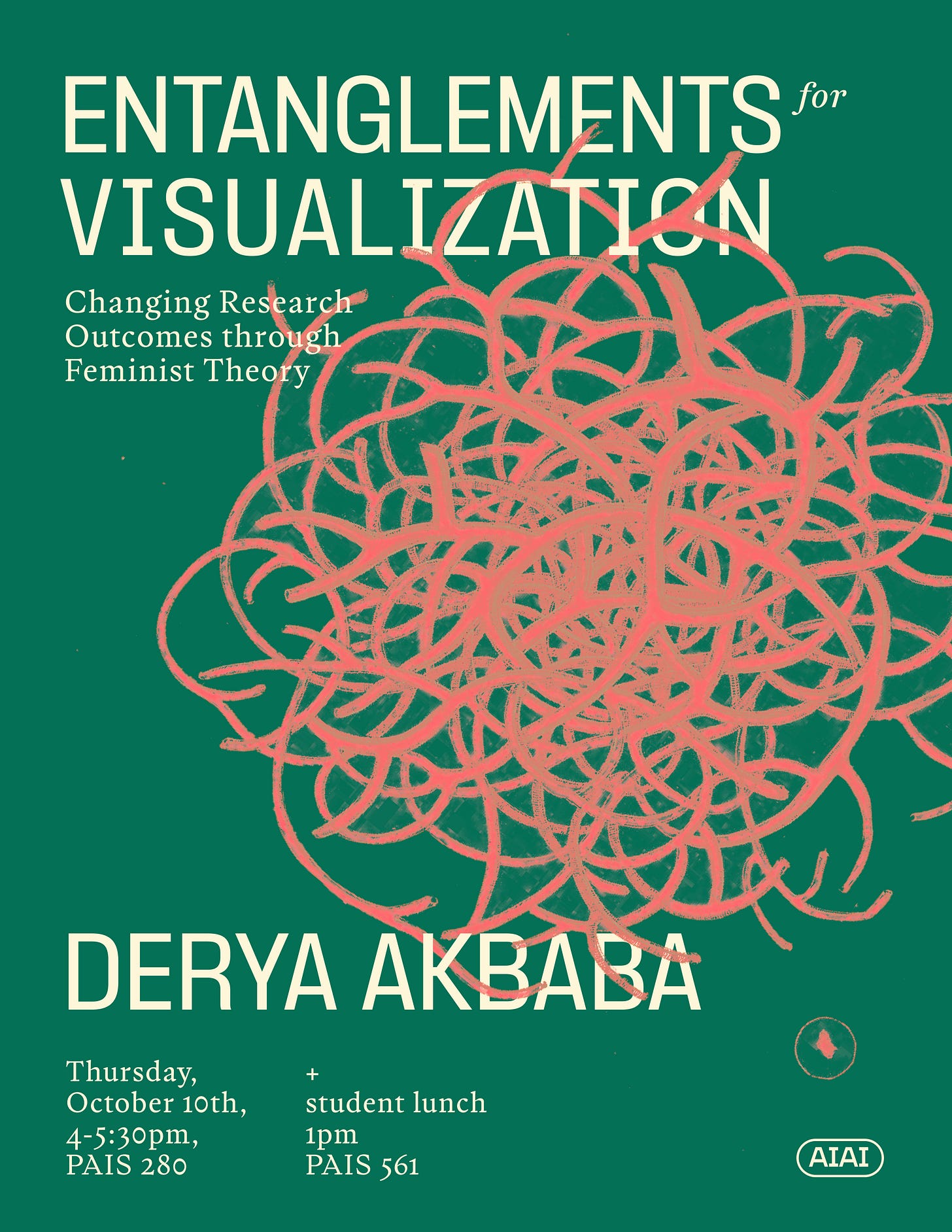I just presented my paper Entanglements for Visualization at Emory in the Atlanta Interdisciplinary Artificial Intelligence Network Speaker series (thank you Lauren for arranging everything!). It was an opportunity to reflect on what it meant to work across disciplines. And I know there are countless papers on how hard interdisciplinary work is, so I won’t belabor the point. Instead, I want to focus on some of the unexpected skills I needed to pick up along the way. In the first part of this series1, I focus on how I needed to learn to read (again) while working with Lauren and feminist scholarship and humanities texts.

You would think after 30-something years, I would know how to read already. THINK AGAIN.2 Across visualization (an engineering discipline) and the humanities, text is used in different ways. I am specifically talking about the role of theoretical text. Let’s take a look at the good ole’ Oxford Dictionary of English to get a refresher on what theory means.
noun (plural theories): a supposition or a system of ideas intended to explain something, especially one based on general principles independent of the thing to be explained
In visualization, we have theories.3 These theories are often grounded in cognitive science, psychology, and perceptual studies. This is how we know things about what visual channels to use. Tamara Munzner’s book — Visualization Analysis and Design — succinctly brings these theories together, putting forward general guidelines for constructing a visualization. If I were the betting type, I would say a safe bet is that most Intro to Visualization courses will include theories of perception and cognition. After all, the goal of visualization is to extend the cognitive capacity of people.
In the humanities, however, theory takes on a different meaning. Rather than drawing on empirical studies derived from the natural sciences, theories are used to deconstruct and reconstruct how and why phenomena are in the world as they are. Sounds kind of similar to the above, right? In discipline though, it is much different. The best description I have found is by Kyla Watana Tompkins, a professor of English studies at Pomona College.
theory is both descriptive of the world we live in and speculative as well, in that it seeks new worlds and new language to understand what seems to be “natural” and “normal.” If the ideas that theory wants to express were easy to say, they would not need to be said.4
In practice, this means that reading theory from the humanities requires imagination and chewing on the content. While engineering papers are precise, (hopefully) clear, and (again, hopefully) to the point, humanities texts rely on word choice in combination with narrative to make a point. The meaning of the text is not often immediately obvious.
Language is the medium through which researchers express new ideas and concepts, often reworking words that play on meaning, producing entendres, or new words entirely. Theoretical text will often have a central thesis or objective, but then be supported with many examples and complementary ideas. And so, the ideas presented in theory are often dense, multiple, and entangled with one another. As a reader and researcher engaging with theoretical text, you don’t need to use every single aspect of the work. Instead, you can focus on one idea and how the text supports, structures, presents, and establishes the new concept.
Dumit outlines how he reads to illustrate the many different approaches one can take when chewing on dense epistemology5. I tried to do something similar here, pointing to the differences in the texts that I needed to learn to pay attention to.
Words Matter: Theorists pay close attention to words and concepts. For example, Barad uses the word matter both as a verb, to be of consequence, and as a noun, a physical object. In reading feminist theories, it became clear that certain words are used creatively to draw attention to and are incorporated as part of the rhetorical argument. This resulted in many discussions with Lauren and Miriah around certain words and concepts (like cut together-apart6) to come to a collective understanding of the words’ meaning through form, and context.
Context Builds: Central to feminist epistemology is that there are many feminist epistemologies7. By spending time with many feminist theoretical texts, core ideas build and grow, resulting in not only a better understanding of theories and concepts within one theory, but also additional meaning is derived through the connections and relations across the theories. The theories are situated in rich contexts and so understanding what the theory was in response to, how the theory relates to other theories and its contexts is invaluable. In our reading of feminist theory, Miriah and I relied heavily on Lauren to situate the theoretical text in the context of others. Without her knowledge and experience, not only would we have been overwhelmed with wayfinding but also we would have missed important context that was critical to understanding the texts we were reading.
Interpretation is Invited: In contrast to engineering research papers that are written with the aim of being formulaic, direct, and with little linguistic flourish, feminist epistemologies are written deliberately to invite interpretation from the reader, building up theory and argumentation through the entirety of the paper (in contrast to being relegated to the discussion or results section of engineering papers). Interpreting feminist theory is not easy because the language is (sometimes) intentionally written to challenge the reader. I’ve read Haraway’s Situated Knowledges several times (10? 20? times). With each reading, new lightbulbs click. Haraway relies on metaphor to discuss the damage that such a distance can have: “And like the god trick, this eye fucks the world to make techno-monsters.” And while this may be one of her more exciting word-crafting sentences, other sentences also require careful attention:
Embodiment is significant prosthesis; objectivity cannot be about fixed vision when what counts as an object is precisely what world history turns out to be about.8
I still scratch my head a little when I read this.
Who else has felt this when they have dipped their toes in other disciplines? It’s a little like a lake. Not sure what mushy stuff you’re stepping on, but the water is inviting and refreshing.
I am ambitiously planning to write part 2 about writing in engineering v. humanities. Time will tell.
Actually, learning Swedish is an excellent reminder that even though I can sound out the words, it doesn’t mean that I am reading.
There is a paper submission area for IEEE VIS called Theoretical & Empirical. You can check it out to see example papers.
from Karen Barad - Meeting the Universe Halfway
see Bardzell, Shaowen, and Jeffrey Bardzell. "Towards a feminist HCI methodology: social science, feminism, and HCI." Proceedings of the SIGCHI conference on human factors in computing systems. 2011 and Harrison, Steve, Deborah Tatar, and Phoebe Sengers. "The three paradigms of HCI." Alt. Chi. Session at the SIGCHI Conference on human factors in computing systems San Jose, California, USA. 2007.
Haraway, Donna. "Situated knowledges: The science question in feminism and the privilege of partial perspective 1." Women, science, and technology. Routledge, 2013. 455-472. (online pdf)


